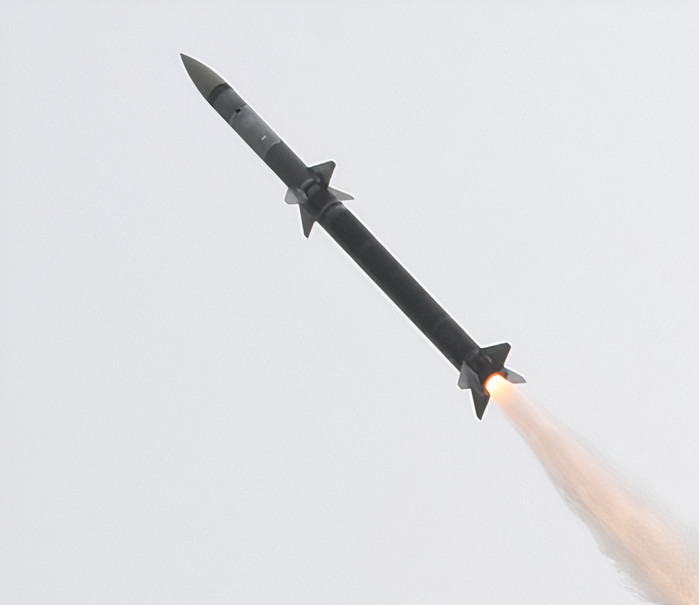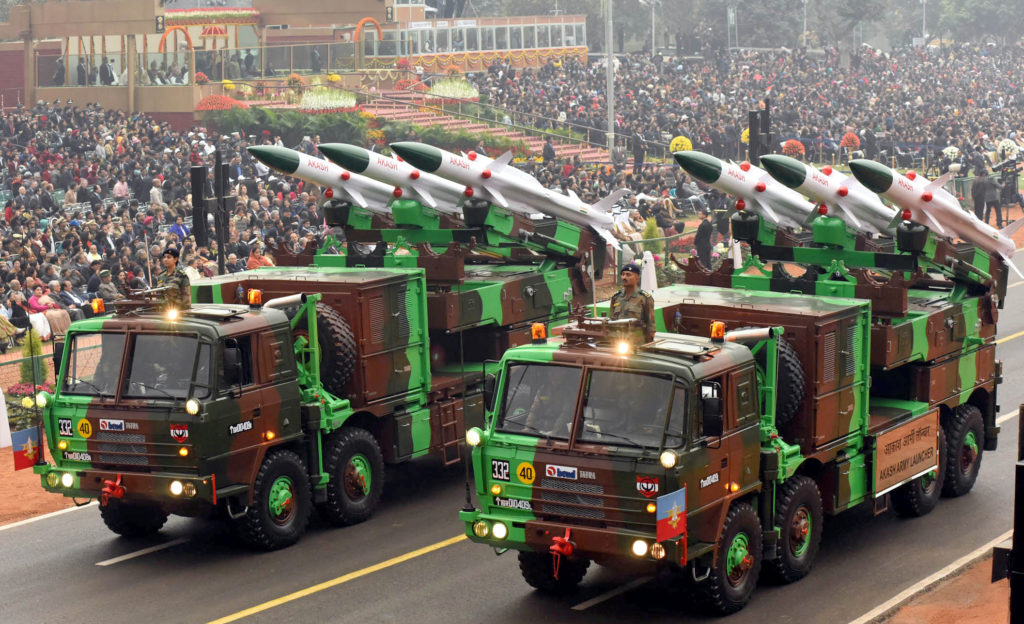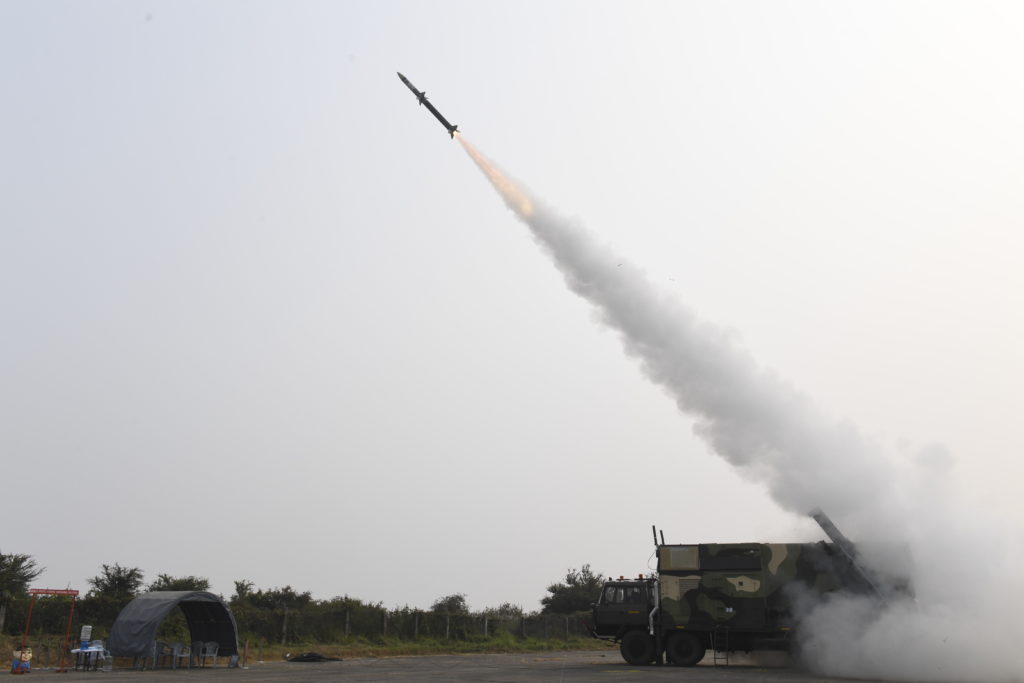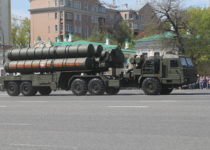What Does The Recent Akash NG Test Tell Us About The Previous Akash Missile?

India conducted the maiden test launch of the Akash NG missile on January 25, bringing into public view for the first time, the successor of the original Akash missile. What is worth discussing though, is why the development of a successor so early, became necessary for a missile that had entered service less than a decade ago. Let’s compare the characteristics of the Akash NG missile system with the original Akash system, as well as with the MRSAM, which is another surface to air missile system recently tested by India, and make sense of the development of these multiple missile systems.
Akash Vs MRSAM
A comparison between the original Akash missile and the MRSAM, which is likely a derivative of the Israeli Barak 8, shows that despite having entered service only recently, the original Akash Mk1 missile is NOT a state of the art missile by any means. The video of the MRSAM test below shows that MRSAM is compact enough for one launcher to carry 8 missiles, and yet has a range of 100 km. But as can be seen in the image of the Akash launcher below, Akash missile is so large, that only 3 missiles can be carried by a launcher, and yet has a range of just 30 km.

And this is because the Akash missile, as its external appearence suggests, is based on the 2K12 Kub missile system, which itself was developed way back in the 60s. The development of the Akash missile began way back in the 80s. It was only because of a combination of issues, like funding crunch, bureaucracy, sanctions due to India’s 1998 nuclear tests, and the technical challanges that face any country in its very first attempt to develop a surface to air missile, that Akash took a long time to develop and enter service in 20012 for the air force, and 2015 for the army. This means that while the missile entered service in 2012, it still uses 80s technology.
Considering this, there was no question that a successor to Akash Mk1 had to be developed fast. While the original Akash missile uses air breathing ramjet engine, the Akash NG uses dual pulse rocket motor, which suggests that its development is benefiting from the development of the Astra Mk2 air to air missile, which is also believed to have a dual pulse rocket motor. Development of missiles like Akash NG might also have benefited from the technology transfer from Barak 8, during the development of MRSAM. Akash NG missile, as can be seen from its test video below, is compact enough for one launcher to carry 6 to 8 missiles, and yet has a range of around 80 km.
Besides, unlike old missiles like the 2K12 and Akash, modern missiles like Akash NG and MRSAM are compact enough to be kept in sealed canisters even on launcher, which increases their shelf life.
Akash NG Vs MRSAM
Having said this, Akash NG doesn’t appear to be exactly in the same class as the MRSAM. Comparing the video of the MRSAM launch above with the image of the Aksh NG test launch below, shows that while the launchers of both missiles are quite compact, MRSAM is launched vertically while Akash NG is launched at an angle by the launcher. This carries tactical consequences, as a launcher that launches the missile at an angle needs to be in an open space to launch the missile, so that it doesn’t crash into a building, tree, or mountain right after launch.

A launcher that launches the missiles vertically, on the other hand, can launch them even when hidden in the middle of a forest or surrounded by tall buildings. This doesn’t just increase the deployability of the missile system, but also makes it more survivable by letting it stay hidden even during missile launchs. In fact, some systems like the S-400 even have optional masts, that can elevate their radars above forest canopy, to enable even the radar vehicles to operate from heavily forested or built up areas.
The MRSAM likely inherits its vertical launch capability from its parent missile Barak 8, which is supposed to be carried not just by ground based launchers, but also by the VLS (Verticle Launch System) cells of naval ships. Indeed, many Indian Navy ships already carry Barak 8 in their VLS cells. Interestingly, Akash Mk1 was considered for fitment to Indian Naval ships. But with its large size, it was a given that it was not the right fit for modern warships which carry all their missiles in compact VLS cells.
Akash NG was than probably planned for fitment in warships. But with the 100 km range Barak 8/MRSAM now carried by Indian warships in their VLS cells, Akash NG will be confined to use only by the army and the air force, which largely takes away the need for vertical launch capability for Akash NG.
Where Does The Old Akash Fit?
It now appears that the Indian army now has modern missiles in pretty much every class, including that of Akash Mk1. The MRSAM and Akash NG are in the 80-100 km range class, and the QRSAM and Spyder are in the 30-40 km range class. What then, is the role of the old, 30 km range Akash Mk1 missile? These new missiles might have made the old Akash obsolete less than a decade after its delayed induction. Indeed, the army has not been happy with the performance of Akash Mk1. But the army and air force probably have no choice but to make do with the Akash Mk1 missiles they have already bought, while still buying the newer Akash NG.
The sad thing is that Akash Mk1 was inducted in the air force in 2012 and in the army in 2015, and is already obsolete. This leads one to wonder if it would have been wise to cancel the development of Akash Mk1 and invest all the resources in the development of Akash NG and QRSAM much earlier. The army and air force could then have had many more Akash NG and QRSAMs, instead of a significant part of their budget being allocated to the purchase of the obsolete Akash Mk1. Hopefully, with time, the already inducted Akash Mk1 systems will also be replaced with Akash NG and QRSAM.


